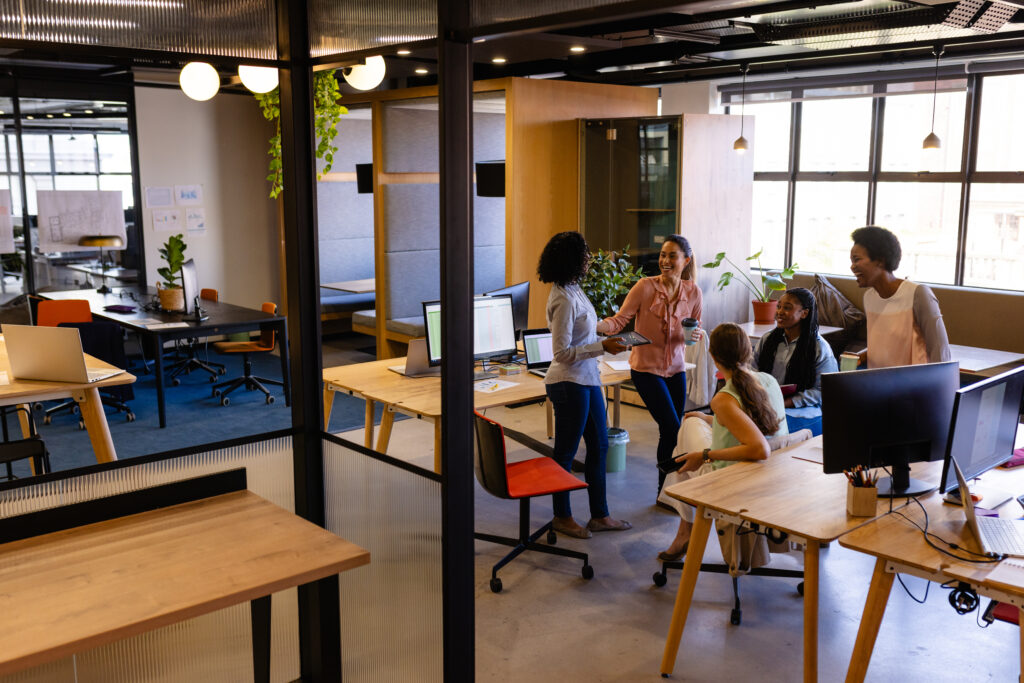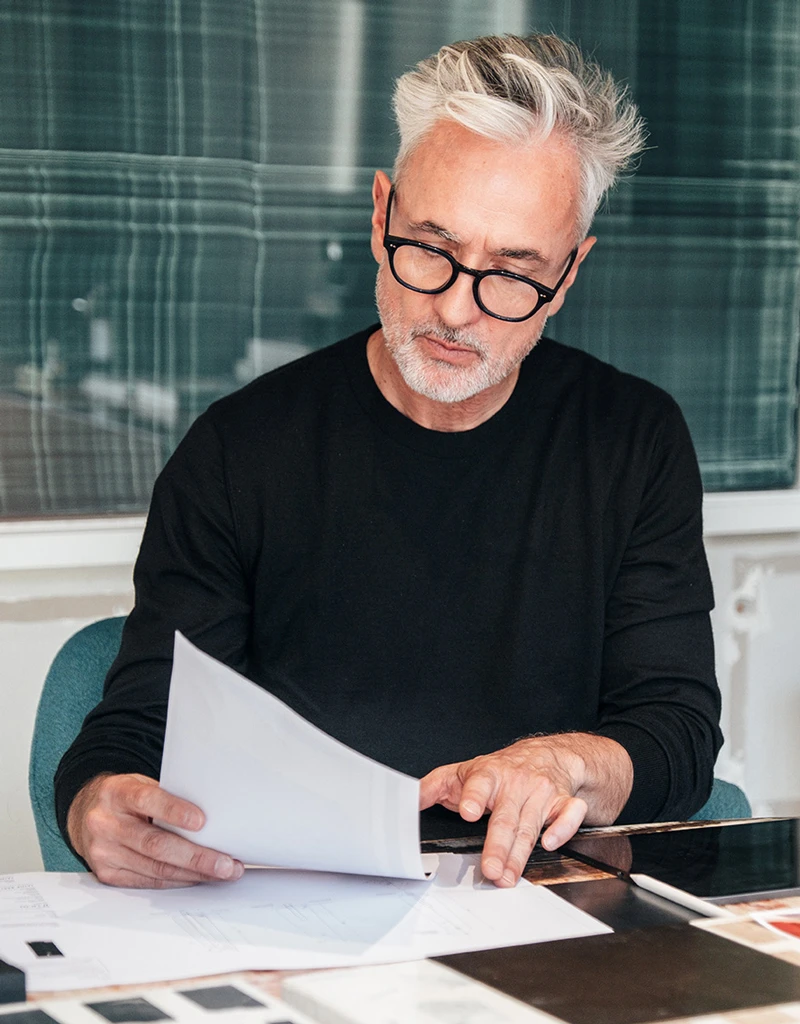Introduction
Modern workplaces are more than just physical spaces—they are psychological ecosystems. The colors on the walls, the light coming through the windows, the acoustics of a meeting room, and even the placement of a coffee machine subtly shape how people think, behave, and feel.
Research in environmental psychology confirms what great designers already know: the way we design a space can significantly influence cognitive function, emotional well-being, and team dynamics. At TabDesignStudio, we believe office interiors should be thoughtfully designed with the human mind at their core—not just for beauty, but for behavior.
Here’s an in-depth look into how strategic office design boosts productivity by aligning with psychological principles.
1. Color Psychology: Designing for Focus, Creativity & Calm
Color affects more than just visual appeal—it influences mood, decision-making, and energy levels.
What We Know:
- Cool colors (blue, green) are calming and ideal for deep-focus areas.
- Warm colors (yellow, orange) stimulate creativity and conversation.
- Neutral tones create a professional, grounded environment.
- Too much white or grey can cause fatigue or emotional detachment.
How TabDesignStudio Uses Color Intentionally:
- In a high-pressure legal firm, we used deep blue meeting rooms to promote calm under pressure.
- For a tech startup, we incorporated pops of orange and lime green in collaboration zones to spark innovation.
- In executive zones, we used charcoal greys with brass accents for authority and sophistication.
🔹 Psychological Result: Color tuning can reduce anxiety, improve creative output, and maintain cognitive engagement throughout the day.
2. Lighting & the Brain: Boosting Alertness and Natural Energy
Lighting affects circadian rhythm, melatonin production, and mood regulation.
Common Problems with Poor Lighting:
- Harsh fluorescent lighting leads to eye strain and mental fatigue.
- Overly dim lighting lowers alertness and increases sluggishness.
- Lack of access to daylight can affect sleep cycles and productivity.
Our Design Principles:
- Daylight is prioritized with floor-to-ceiling windows, clear glass partitions, and strategic layout orientation.
- Layered lighting plans include ambient, task, and accent lighting to control intensity and focus.
- In client workspaces without daylight, we use circadian-tuned LED lighting that adjusts in color temperature over the day.
🔹 Psychological Result: Proper lighting improves focus, reduces stress, and helps employees feel more energized and present.

3. Spatial Flow & Cognitive Load: The Power of Organized Design
The human brain thrives in environments with clarity and visual hierarchy. When spaces are cluttered or disjointed, it increases cognitive load—making the brain work harder just to navigate or understand the space.
Problems with Poor Spatial Planning:
- Decision fatigue from navigating disorganized spaces.
- Overwhelm caused by cluttered furniture or undefined zones.
- Lack of visual cues to guide workflow or collaboration.
How We Structure Spaces:
- Zoning: We design clear divisions between focus work areas, collaborative zones, and rest areas—each with its own visual language.
- Circulation logic: We reduce bottlenecks by creating intuitive paths that follow natural movement.
- Visual clarity: We use materials, light, and layout to create a sense of psychological “flow.”
🔹 Psychological Result: Organized spaces reduce stress, promote smoother workflow, and create a sense of mental spaciousness—even in smaller offices.
4. Acoustic Control: Protecting Mental Clarity in Open Workspaces
Noise pollution is a major disruptor of concentration and mood in modern offices, especially with the rise of open-plan layouts.
Psychological Effects of Poor Acoustics:
- Increased cortisol levels due to constant auditory interruptions.
- Reduced focus and higher error rates in cognitive tasks.
- Increased emotional fatigue due to lack of auditory privacy.
Acoustic Solutions We Use:
- Soft materials: Upholstered walls, rugs, ceiling baffles, and felt panels to absorb sound.
- Private pods & huddle rooms: For calls or deep-focus work.
- Sound masking systems: White noise generators to neutralize distractions.
- Smart zoning: Positioning collaborative areas away from deep-work zones.
🔹 Psychological Result: Controlled sound environments support deeper thinking, reduce anxiety, and protect cognitive stamina over long workdays.
5. Comfort & Belonging: Designing for Emotional Safety and Inclusion
Beyond productivity, people need to feel emotionally safe and comfortable at work. That includes physical comfort, cultural inclusivity, and emotional connection.
How Design Enhances Emotional Well-being:
- Ergonomic furniture supports posture and reduces physical stress.
- Inclusive design ensures accessibility for all—universal pathways, varied seat heights, and neurodiverse-friendly layouts.
- Design language reflects culture: local artwork, materials, or bilingual signs promote a sense of identity.
- Breakout areas like cozy lounges, café corners, or wellness rooms provide essential mental resets.
Real-World Example:
We redesigned an HR firm’s office with biophilic lounge spaces, adjustable lighting at every desk, and softer acoustic furniture. Employee satisfaction increased by over 30% within three months.
🔹 Psychological Result: When employees feel seen, safe, and comfortable in their environment, they are more likely to stay engaged, creative, and loyal.
Bonus Insight: The Role of Micro-Experiences
Psychological impact isn’t just in the big things—it’s in micro-moments.
TabDesignStudio Adds:
- Thoughtful welcome areas that reduce anxiety for new visitors.
- Mood-enhancing scents in select zones (lavender in focus rooms, citrus in meeting rooms).
- Personalized desks and community walls to create emotional connection.
🔹 These micro-design choices create emotional anchors, helping people feel at home, even at work.
Conclusion: The Mind is the Blueprint
True productivity isn’t just about efficiency—it’s about creating the mental conditions where people can thrive. When offices are designed with psychology in mind, they become more than just places to work—they become places to think, connect, grow, and innovate.
At TabDesignStudio, we apply cutting-edge research and proven design psychology to every project. Because when you design for the mind, you build spaces that work beautifully—for business and for people.

